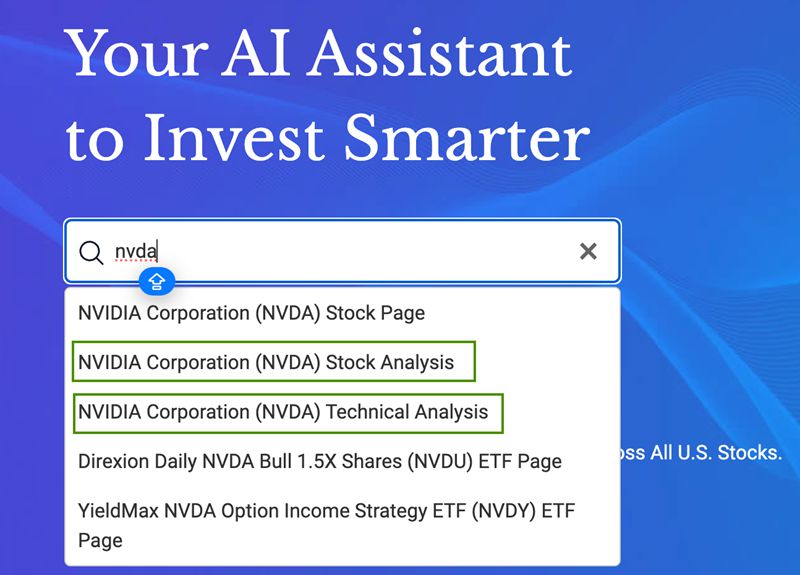20 Great Facts For Deciding On Ai Trading Software Websites
20 Great Facts For Deciding On Ai Trading Software Websites
Blog Article
Top 10 Tips When Evaluating The Cost And Pricing For Ai Analysis And Stock Prediction Platforms.
Examining the price and cost of AI software for predicting and analyzing stocks is crucial to ensure you get the most for your money and avoid hidden charges or unanticipated expenses. Pricing structures vary greatly, and knowing the price you're paying is essential to make an informed choice. Here are the 10 best ways to evaluate the cost and pricing.
1. Understanding Pricing Model
Subscription-based platform: Find out whether you are required to pay either a monthly or annual cost. Also, find out what features come with each level.
Pay-per-use : Confirm that the platform charges you according to usage (e.g. trades, requests for information or forecasts).
Freemium Model: Examine to see if the website offers a free version that offers limited features. The premium features are billed for.
2. Compare Pricing Tiers
Compare features across each pricing level (e.g. basic, professional).
Scalability: Make sure the price tiers are aligned to your requirements.
Upgrade flexibility - Examine to see if there's an easy way to change your plan or lower it if your needs change.
3. Evaluate Hidden Costs
Data fees: Make sure to check for any additional charges for data that is premium (e.g. live data, or advanced analytics).
Brokerage Fees: Determine whether your brokering platform charges additional fees for integration or trade execution.
API usage: Determine if will incur additional costs for high frequency API usage or API access.
4. Demos as well as Free Trials and Test Drives
Trial period. Find platforms that offer trials or demos so that you can try their services before committing.
Limitations of the trial Verify if it includes all features or if there are limitations in terms of the functionality.
No-commitment option If you do not like the service, you are able to end the subscription at no cost.
5. Find out about discounts and promotions.
Annual discounts: Determine whether your platform provides discounts on subscriptions that are paid annually, compared to plans that are billed monthly.
Referral Programs: Find out if your platform offers discounts or credits to users who refer others.
Ask about bulk or institutional prices if your business is a large one.
6. How to Evaluate Return on investment (ROI).
Cost vs. value - Determine if the platform's features, predictions and cost are worth the cost. Do you have time saved or make better choices in trading?
Find out the platform's success rate or testimonials from users to determine its potential ROI.
Costs of other platforms: Compare the cost of the platform to the cost of utilizing it (e.g. missing opportunities, manual analyses time).
Review Cancellation & Refund Policies
Terms of cancellation: Be sure you're able cancel without any hidden fees or penalties.
Check the refund policy to determine if you can get an amount of money back for any unredeemed subscription portion.
Auto-renewal : Find out whether your subscription is auto renewed by the platform and learn how to opt out.
8. Examine Transparency of Pricing
Price page that is clearly written: Make sure your platform provides a thorough and precise pricing page with no hidden charges.
Support for customers Contact customer support to discuss any pricing ambiguities or additional costs.
Contract Terms: Check the conditions of service for any agreements with a long-term term or penalties.
9. Compare to Competitors
Features comparison Comparison of pricing and features offered by the platform to its competitors to ensure you're getting the most value for money.
User reviews: Check out reviews from users on the platform and determine whether it's worth it.
Positioning in the market: Find out the positioning of your platform as a mid-tier, budget or premium choice. Also, make sure the cost is comparable to your expectations.
10. Review the long-term costs
Price increases: Look at the history of the platform in the past and see how frequently it has raised prices.
Features added: Determine if new features are included in your plan currently or need to be upgraded.
Scalability costs - Make sure that the price of the platform remains affordable even as your data or trading requirements increase.
Bonus Tips
Try out multiple platforms. Try them all out during a free trial to test their performance.
Negotiate price: If you are an institution or you're a frequent user, you should consider to inquire about discounts or customized pricing.
You can find free educational sources on certain platforms.
Follow these tips and you'll be able to assess the price, cost and the features offered by AI platform for trading stocks. A balanced platform can provide you with the best of both worlds: affordability and functionality. Follow the top inciteai.com AI stock app for more info including ai for stock trading, ai stocks to invest in, ai investment platform, stock analysis tool, trader ai, free ai tool for stock market india, stock analysis app, best stock analysis website, chatgpt copyright, best ai stock and more.
Top 10 Tips For Assessing The Risk Management Of Ai Stock Prediction/Analyzing Platforms
A platform for trading that makes use of AI to predict/analyze stocks must be equipped with a strong risk management system. This can protect your capital, and help minimize any potential losses. Platforms with strong risk management capabilities can assist you in navigating turbulent stock markets and make an decisions based on information. Here are 10 top tips for assessing these platforms' risk management capabilities:
1. Review Stop-Loss and take-profit features
Levels that can be customized: Make sure your platform permits you to set stop-loss and take-profit levels for specific strategies or trades.
Trailing stops: Check if your platform supports trailing stops, which automatically adjust as the market changes in your direction.
If the platform offers the option of a stop-loss order that guarantees your trade is closed at the amount specified in volatile markets, you can be confident that you will be able to trade successfully.
2. Calculate Position Size Tools
Fixed amount: Make sure that the platform allows you to establish the size of a position based upon the fixed amount of money.
Percentage of portfolio: You can manage your risk by setting positions sizes in proportion to per percentage.
Risk-reward rate: Check whether you are able to determine the risk-reward ratio for specific strategies or trades.
3. Look for Diversification Support
Multi-asset trading. Make sure that your platform can handle various asset classes, including ETFs, Forex, Options, and stocks.
Sector allocation: Find out if your platform has tools for monitoring and managing the exposure to sectors.
Diversification of geographical areas - Make sure that the platform allows the ability to trade on markets across the world. This can help reduce geographical risks.
4. Evaluation of leverage and margin controls
Margin requirement: Ensure that the platform clearly outlines any margin requirements that apply to leveraged trades.
Examine whether you can establish leverage limits to limit your risk exposure.
Margin calls - Check to see if your service notifies you of margin calls promptly. This will prevent liquidation.
5. Review the risk Analytics Reporting
Risk metrics. Make sure your platform provides you with key risk indicators (e.g. VaR Sharpe Ratio, Drawdown) relevant to the portfolio you are managing.
Scenario analysis: Ensure that the platform allows you to create different scenarios for the market to assess the risks.
Performance reports: Ensure that the platform gives you detailed reports on performance, including returns that are adjusted for risk.
6. Check for Real-Time Risk Monitoring
Monitoring your portfolio: Ensure that your platform permits you to monitor your portfolio in real time.
Alerts and notifications. Find out if the platform can provide real-time notification of events involving risk.
Risk dashboards: Ensure that your platform offers an adjustable risk dashboard that gives you an entire overview of your risk profile.
7. Test Stress Testing and Backtesting
Stress testing: Make sure that the platform permits you to stress-test your portfolios or strategies in extreme market conditions.
Backtesting: Check that the platform supports backtesting strategies based on previous data to determine risk and the performance.
Monte Carlo Simulators: Verify whether the software uses Monte Carlo models to model possible outcomes and assess risks.
8. Risk Management Regulations Compliance Assessment
Regulatory Compliance: Verify the platform's compliance with applicable Risk Management Regulations (e.g. MiFID II for Europe, Reg T for the U.S.).
Best execution : Check to find out if your platform uses best execution procedures. This ensures that trades will be executed for the best possible price while minimizing the chance of slippage.
Transparency. Check that the platform is transparent and provides clear disclosures about the risks.
9. Look for risk parameters that are User Controlled
Custom risk rules for your business - Make sure the platform permits you to create your own risk management rules.
Automated risk controls: Check to see whether your system can enforce risk management rules based on the parameters you've established.
Manual overrides: Check whether your platform allows you to manually override automated risk control.
Review of User Feedback and Case Studies
User reviews: Study user feedback to gauge the platform's efficiency in managing risk.
Case studies: Check for testimonials or case studies that highlight the platform's capabilities in the field of risk management.
Forums for community members. Check to see whether the platform has a vibrant forum for users, in which traders share risk management strategies and advice.
Bonus Tips
Trial period for free: Test the risk management capabilities of the platform in real-world scenarios.
Support for customers: Make sure that the platform can provide the best support to issues or questions relating to the management of risk.
Educational resources - Check to see if the platform has instructional resources and videos on risk management best practice.
The following tips can assist you in evaluating risks management options that are offered by AI stock predicting/analyzing platforms. You will be able pick a platform that can safeguard your investment while limiting potential losses. Robust risk management tools are essential for navigating turbulent markets and achieving trading success. Take a look at the best ai trading for site info including ai stock trading bot free, best ai stock trading bot free, stock analysis app, best stock analysis website, best stock analysis app, investment ai, ai invest, investing ai, invest ai, ai stock price prediction and more.